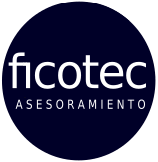In the Norma Foral 3/2020 of 6 November introduces the new tax obligation, which will begin on 1 January 2022.
This regulation introduces an additional twenty-second provision in the Norma Foral del
Corporate Income Tax
which regulates the new Deduction for the promotion of the implementation of a computer system that guarantees the integrity, conservation, traceability, inviolability and remission of the files that document the supply of goods and services.
This provision establishes a deduction of 30% of the investments and expenses made in the years 2020 to 2023, both inclusive, related to the implementation of this new system. This deduction will be applied on:

– Acquisition of equipment and terminals, with their associated software and peripherals, that enable compliance with the obligation referred to in article 122 bis of this provincial regulation, including the costs of their installation and implementation.
– Acquisition, subscription, delivery, updating or renewal of the software necessary to comply with the obligations related to the files documenting the supply of goods and services referred to in letter b) of section 2 of article 122 bis of this provincial regulation, including the costs of their installation and implementation.
– Acquisition, subscription, delivery, updating or renewal of the electronic signature software to be implemented to comply with the obligations related to the files documenting the delivery of goods and services, including the costs of its installation and implementation.
In principle, the basis for the deduction is sufficiently broad to be able to cover all facets of investments and expenses, also eye expenses, necessary to implement this new billing-communication system in the company,
TicketBAI
.
However, there are limits to this deduction. It is important to emphasize that the basis of the deduction, we repeat the basis of the deduction, not the deduction itself, may not exceed:
- a) 5.000,00 €.
- b) 1% of the net turnover for the last financial year ending in 2019. For companies whose financial year coincides with the calendar year, the turnover corresponding to 2019.
This provision clarifies that, when this 1% of the turnover gives a result of less than 500.00 €, that is, when the turnover of the year 2019, or of the reference year, is less than 50,000.00 € (500.00/1.00%) the base, we emphasize the base, of the deduction will be the lower of the following two amounts:
- (a) The basis of expenditure and investments actually incurred
- b) 500,00 €
This implies that when the expenses or investments effectively made are higher than 500.00 euros, these 500.00 euros will be the basis for the deduction to be applied, even if the turnover has been below these 50.000,00 euros. If the amount invested and/or spent has been less than these 500,00 €, these will be the basis for deduction. We could speak, orientatively, of a minimum deduction of 150,00 €.
On the other hand, from everything we have seen, we have that the maximum deduction amount to apply for this concept will be 1.500.00 €, we repeat, the maximum deduction amount. (5.000,00 € for 30%)
Finally, in order to be as complementary as possible within the simplicity with which we have tried to explain this new deduction, we should comment on four more points:
1.- This deduction cannot be applied to expenses or investments made after the date on which the taxpayer becomes liable for this obligation. In principle, from 1 January 2022 onwards, this obligation will be enforceable according to activities.
2.- The deduction may be applied by the
asset-holding companies
. It should not be forgotten that they are also obliged to use this system.
3.- The amounts not deducted due to lack of quota may be deducted in the next 30 years and successive years.
4.- The application of this deduction is optional.


